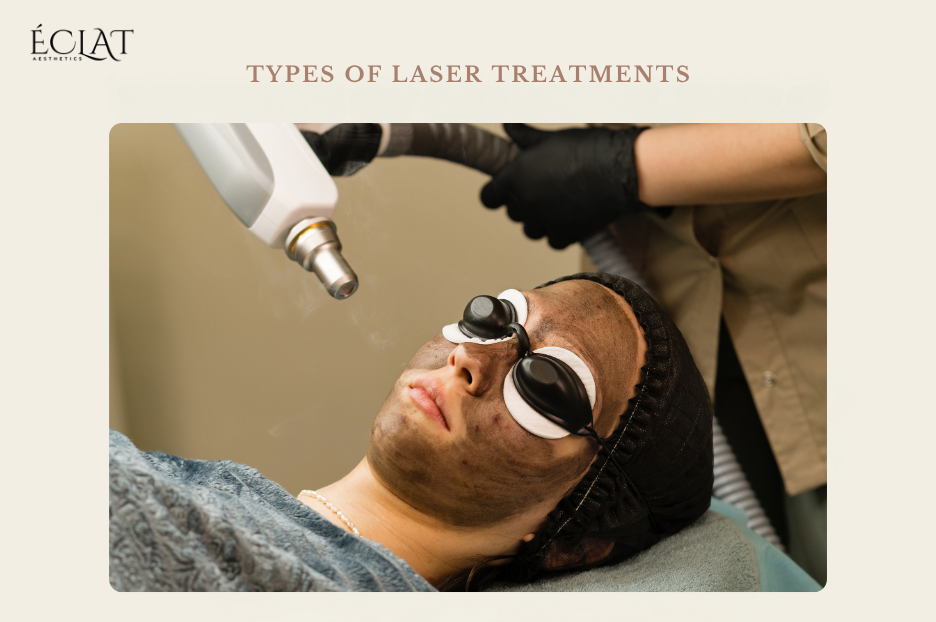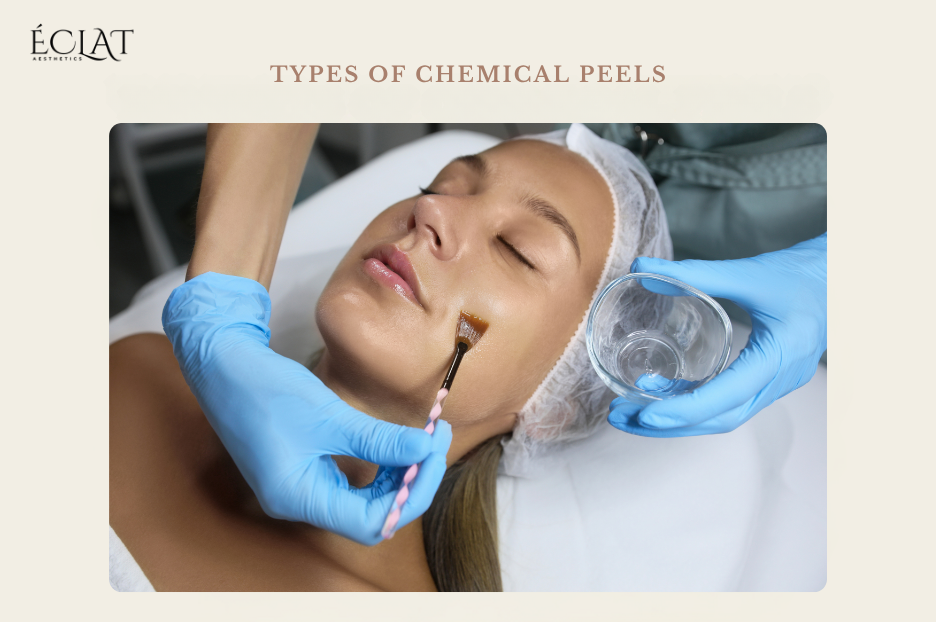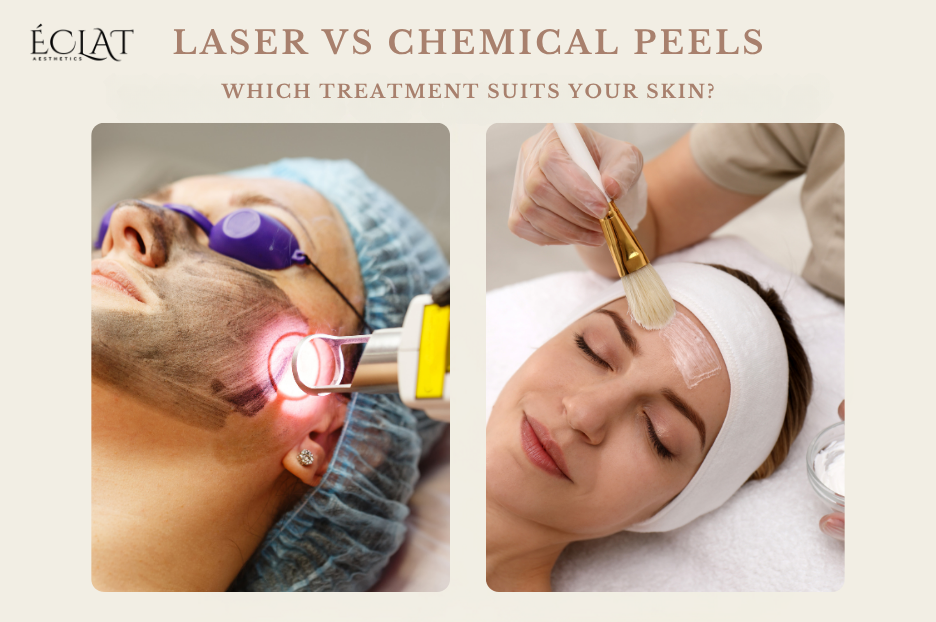The pursuit of youthful, glowing skin is a universal goal, one that many of us strive for through different skin care regimes. As we age, our skin faces various challenges like wrinkles, fine lines, acne scars, hyperpigmentation, and overall dullness. To combat these issues, a range of treatments has emerged over the years, with laser treatments and chemical peels being two of the most popular and effective options.
Both methods offer incredible results, but they work in very different ways. Choosing between the two can be a daunting decision for anyone looking to enhance their skin’s appearance. This detailed guide will explore both treatments, comparing their mechanisms, benefits, and risks, and helping you determine which one suits your skin type and needs best.
What Are Laser Treatments?
Laser treatments have revolutionized the world of aesthetic medicine, providing non-invasive solutions to various skin concerns. Laser technology uses highly concentrated light beams that target specific skin layers, stimulating collagen production and treating skin imperfections. These treatments are customizable, allowing dermatologists to adjust them to treat a wide array of skin issues.

Types of Laser Treatments
There are various types of lasers, each designed to treat specific skin concerns. Laser treatments fall into two broad categories:
1. Ablative Lasers:
These lasers remove the outer layers of the skin, providing a deep level of resurfacing. Ablative lasers are typically used for treating severe skin conditions like deep wrinkles, scars, and pigmentation issues.
Examples: YAG lasers.
Non-Ablative Lasers:
Non-ablative lasers work beneath the skin’s surface without removing the outer layers. These lasers stimulate collagen production, improving skin texture and reducing fine lines and wrinkles over time.
Examples: IPL (Intense Pulsed Light)
Benefits of Laser Treatments
- Precision: Lasers can target specific skin areas, making them ideal for localized concerns like age spots or acne scars.
- Quick Recovery Time: Non-ablative lasers typically have shorter recovery times compared to their ablative counterparts.
- Minimal Risk of Complications: When performed by a professional, lasers generally have a low risk of complications such as scarring or infection.
- Long-Lasting Results: Laser treatments often provide long-term results with minimal maintenance.
What Are Chemical Peels?
- Chemical peels are a type of skin treatment that involves applying a chemical solution to the skin. The solution works by exfoliating the outermost layer of the skin, removing dead skin cells and promoting the growth of new, healthy skin. Chemical peels vary in strength, and the level of penetration into the skin depends on the type of peel chosen.

Types of Chemical Peels
Chemical peels are classified into three categories based on their strength and depth of penetration:
- Superficial Peels (Light Peels):
These peels are the mildest and only affect the outer layer of the skin. They are typically used to treat minor skin issues like light pigmentation, fine lines, and acne.
Examples: Glycolic acid, salicylic acid peels.
- Medium Peels:
Medium peels penetrate deeper into the skin, targeting the outer and middle layers. These peels can address moderate skin concerns such as sun damage, age spots, and more noticeable wrinkles.
Examples: TCA (trichloroacetic acid) peel.
- Deep Peels:
Deep chemical peels work on the deeper layers of the skin and are used to treat severe skin damage, such as deep wrinkles, scars, and significant pigmentation. These peels require a longer recovery period.
Examples: Phenol peel.
Benefits of Chemical Peels
- Improved Skin Texture: Chemical peels remove dead skin, allowing fresh, smooth skin to emerge.
- Even Skin Tone: Chemical peels can help fade sunspots, age spots, and pigmentation, resulting in a more even skin tone.
- Treats Acne and Scarring: Certain peels, especially salicylic acid peels, are great for treating acne and acne scars.
- Minimal Downtime (Superficial Peels): Superficial peels are quick with minimal recovery time, making them ideal for those with busy schedules.
Laser vs Chemical Peels: A Detailed Comparison
Now that we understand what each treatment entails, it’s time to dive deeper into the key differences between laser treatments and chemical peels. Below is a detailed comparison based on various factors:
| Treatment Mechanism | ||
| Aspect | Laser Treatments | Chemical Peels |
| How it Works | Uses focused light energy to target skin layers and structures | Uses chemical solutions to exfoliate and rejuvenate the skin |
| Penetration Depth | Varies based on the type of laser, from superficial to deep | Varies based on the peel type, from light exfoliation to deep penetration |
| Target Area | Focuses on specific skin layers, such as the epidermis or dermis | Primarily works on the outermost layer of the skin |
| Skin Types & Concerns | ||
| Aspect | Laser Treatments | Chemical Peels |
| Best For | Skin resurfacing, acne scars, pigmentation, wrinkles, texture | Mild pigmentation, acne, fine lines, uneven texture |
| Sensitive Skin | Non-ablative lasers are generally safer for sensitive skin | Chemical peels can cause irritation, especially for sensitive skin |
| Best for Acne Scars | Ablative lasers like CO2 lasers are highly effective for deeper acne scars | Medium peels like TCA work well for mild to moderate acne scars |
| Best for Wrinkles | Non-ablative lasers stimulate collagen, helping reduce fine lines | Deep chemical peels can smooth out wrinkles, but with a longer recovery |
| Pain & Downtime | ||
| Aspect | Laser Treatments | Chemical Peels |
| Pain Level | Mild to moderate discomfort, especially with ablative lasers (numbing is used) | Mild discomfort, more noticeable with deeper peels |
| Downtime | Non-ablative lasers have minimal downtime, while ablative lasers require 1-2 weeks | Light peels require no downtime; deeper peels may require 1-2 weeks of recovery |
| Results & Effectiveness | ||
| Aspect | Laser Treatments | Chemical Peels |
| Immediate Results | Results may be visible immediately, especially with non-ablative lasers | Immediate results are visible after peeling, with full effects seen after 1-2 weeks |
| Long-Term Results | Longer-lasting results with fewer sessions | May need maintenance for long-term results |
| Side Effects & Risks | ||
| Aspect | Laser Treatments | Chemical Peels |
| Side Effects | Redness, swelling, temporary pigmentation changes | Redness, irritation, peeling, potential pigmentation changes |
| Risk of Hyperpigmentation | Can occur if proper post-treatment care is not followed | Higher risk of pigmentation changes, particularly with deep peels on darker skin |

Which Treatment is Right for You?
When deciding between laser treatments and chemical peels, it’s essential to consider your skin type, the severity of your skin concerns, and your expectations for results. Below, we’ve outlined which treatment is best suited for different skin needs.
Laser Treatments Are Best For:
1. Severe Acne Scars:
Laser treatments, especially CO2 lasers, are highly effective for addressing deep scars and severe acne-related skin issues.
2. Deep Wrinkles and Aging Signs:
Non-ablative lasers like IPL are excellent choices for reducing wrinkles and promoting collagen production.
3. Pigmentation Issues:
IPL are ideal for treating pigmentation issues such as sunspots, melasma, and age spots.
4. Sensitive Skin Types:
Non-ablative lasers are gentler on sensitive skin, making them a suitable choice for individuals with delicate skin.
Chemical Peels Are Best For:
1. Mild to Moderate Acne Scarring:
Medium peels, like TCA peels, are great for treating light acne scars, with minimal downtime.
2. Uneven Skin Texture and Tone:
Light chemical peels like glycolic acid peels can even out skin tone and texture for a smoother complexion.
3. Fine Lines and Early Wrinkles:
Superficial chemical peels can work wonders on fine lines, while deeper peels can target more significant wrinkles.
4. Maintenance for Healthy Skin:
Light peels are great for ongoing skin maintenance, keeping the skin smooth and radiant over time.
How to Choose Between Laser Treatments and Chemical Peels
Choosing between laser treatments and chemical peels depends on your skin concerns and goals. If you’re dealing with deep wrinkles, severe acne scars, or pigmentation issues, laser treatments may be the more effective option, offering long-lasting results with minimal downtime. On the other hand, if you’re looking to improve texture, tone, or address mild acne and fine lines, chemical peels provide an excellent solution with quick recovery. Whatever your skin needs, our experts at Éclat Medical Aesthetic can guide you in selecting the right treatment for your skin type and desired results.
Your Path to Radiant Skin Starts Here
Ready to transform your skin? Whether you’re considering a laser treatment or a chemical peel, Éclat Medical Aesthetic is here to help you achieve your skin goals. Our team of experienced professionals will provide a personalized consultation to ensure you choose the right treatment for your skin type and concerns. Don’t wait to get the glowing, youthful skin you deserve – book your consultation with us today and take the first step toward a more confident you!
FAQs
Which treatment is better for acne scars, laser or chemical peel?
For deep acne scars, laser treatments are highly effective in resurfacing the skin and promoting collagen production. For mild to moderate acne scars, chemical peels like TCA (trichloroacetic acid) peels can also provide noticeable improvements in texture and tone.
Are laser treatments safe for sensitive skin?
Yes, non-ablative laser treatments are generally safe for sensitive skin as they work beneath the surface without causing damage to the outer layers. However, it’s important to consult a skincare professional to determine the best type of laser for your skin.
How long do the results from laser treatments last?
Results from laser treatments can last anywhere from several months to a few years, depending on the type of treatment and the severity of the skin condition. For long-lasting results, periodic touch-up treatments are recommended.
What are the risks of chemical peels?
While chemical peels are generally safe, there are potential risks, such as skin irritation, redness, scarring, and hyperpigmentation. The risk increases with deeper peels, especially for darker skin tones. It’s essential to follow aftercare instructions and consult with a qualified professional.
How many chemical peel sessions are required for best results?
For best results, chemical peels typically require a series of treatments. Superficial peels may need 3-6 sessions, while deeper peels might only require 1-2 sessions. Your skincare professional will recommend the best treatment plan for your needs.
Can I combine laser treatments and chemical peels?
Yes, in some cases, combining laser treatments and chemical peels can enhance results. However, it’s essential to consult with a professional to ensure they are suitable for your skin type and concerns.
How do I know if I’m a good candidate for laser or chemical peel treatments?
Both laser treatments and chemical peels are suitable for various skin types, but the best treatment depends on your skin concerns, goals, and medical history. A consultation with a professional at Éclat Medical Aesthetic will help determine the right option for your skin.
Are laser treatments or chemical peels more effective for treating pigmentation?
Both treatments can help with pigmentation, but laser treatments like IPL are particularly effective for treating deeper pigmentation and discoloration. Chemical peels, especially glycolic acid peels, can address milder pigmentation concerns and improve overall skin tone.

